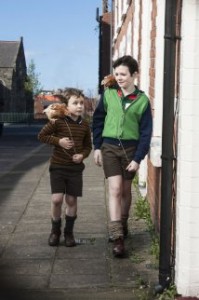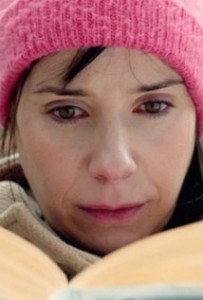By Danny Manus
If you’re using a short film as your calling card, you need to make sure it’s dialing the right number.
Unless you live in Denmark, where making short films can actually be a sustainable career, film shorts are basically made for three reasons; as practice; as inspiration or proof of concept for a larger feature project; or as a sample to show off your talents.
In terms of reason # 2, unless your film short is a high concept, visual FX-laden action or sci-fi project, they don’t usually help get a feature version sold. Yes, it worked for Damien Chazelle and his nominated film Whiplash, but you’d probably be better off shooting a trailer instead.
If you’re going to use a short to show off your talents, there are certain things to keep in mind.
There are 3 major guidelines to creating great short films.
- Tell a story – completely, compellingly, and concisely.
- Production value is everything. Make it look 5x as expensive as it was to make.
- Have a POV, a vision, and a voice that stands out on the page and on the screen.
Let’s break these film shorts down a bit more…
Just because it’s short, doesn’t mean your story shouldn’t have a beginning, middle and end. While it is fine for your short to feel like it could continue and there could be a larger story to explore, it still needs some sort of finality to it. It needs resolution. With a short, it’s not just about the BIG idea. It’s about the big idea that can be told concisely.
Often, the hardest part is deciding how and where your story should start so you can create a world in basically ONE page that grabs us immediately. The most popular ways to do this and create a situation to explore, are to either set up a clear goal, ask a question, or pose a problem. And then through those set ups, explore the human condition. This will help ensure you are creating something intriguing enough to engage us, grab us, or touch us in some way. But something simple enough that it can be resolved in under 10 minutes. And much like with any feature scene, you want to try to start your story as late as possible while still building context into your first scene.
Some examples…
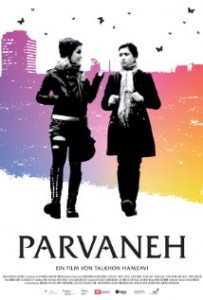 For instance, in this year’s live action short nominee Parvaneh, a young girl must escape a refugee camp to send money to help her family, but then needs to find someone else to help her send it. And the person she finds only causes her more issues and mystery.
For instance, in this year’s live action short nominee Parvaneh, a young girl must escape a refugee camp to send money to help her family, but then needs to find someone else to help her send it. And the person she finds only causes her more issues and mystery.
Situation. Problem. Obstacle. More obstacles. Mystery. Resolution.
In nominee Boogaloo and Graham, two young kids in Northern Ireland don’t want to lose their pet chickens and their devotion to those pets causes havoc in their family.
Simple. Sweet. Emotional. Funny.
Don’t short change your characters for sake of brevity. You still need to know what your character’s goal, arc, dilemma and motivation are, even if they are not ALL brought out in the short. But mapping out your characters’ journey or arc for these few pages will help you figure out where to start and end the story. Think about the quickest and most visual way for us to get to know your character. What image or action or line will make us GET where they are starting from? That’s your first shot and scene.
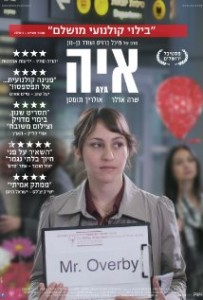 In nominated short Aya, the first shot is a woman standing in an airport, looking for someone possibly arriving while looking lost and contemplative herself. It sets up an intriguing mindset that plays mysteriously into the rest of the story.
In nominated short Aya, the first shot is a woman standing in an airport, looking for someone possibly arriving while looking lost and contemplative herself. It sets up an intriguing mindset that plays mysteriously into the rest of the story.
Creating compelling characters in a short is difficult as you don’t have the luxury of 10 pages to set them up and tell us their hopes, dreams, goals, backstories, fears, and motivations like in a feature. You’ve got less than 1 page to make them pop. In all of this year’s nominees, it’s about the present story and situation for the character, not their whole life story. Don’t make us feel like spectators, make us feel like participators. In Aya, there’s not much backstory, but the audience feels like the third person in the car with the actors.
One major part of bringing your characters to life – is your casting process. Do yourself a favor – don’t cast your friends and neighbors just because they bought you beer. If you’re using this as a real calling card or entrée into the business, then hold real casting sessions and cast the person best for the job (that will work for free or within your budget). And if you want to get accepted into every festival on the planet, cast an already-known celebrity. Find a way to reach them – referrals, friends of friends, their assistants, their companies, etc. But to get a star to be in your short, you better be writing a compelling, three-dimensional character.
It worked for this year’s nominee The Phone Call, which features Golden Globe Winner Sally Hawkins and Oscar Winner Jim Broadbent. The story of a crisis hotline operator and a suicidal caller isn’t insanely new, but it’s the dialogue that attracted the talent, and the talent that got this short its notoriety.
Though not nominated, one of my favorite shorts from last year is The Sidekick, written by and starring Rob Benedict and a ton of celebrities including Ron Livingston, Lizzy Caplan and Jason Ritter. Rob and director Michael Weithorn used their connections to assemble a great cast and it worked. The short film just got its digital release on iTunes, Vimeo and Amazon February 3rd.
No matter your story or cast, if you’re making a short film, do yourself a favor and multi-hyphenate yourself. The truth is, if you’re ONLY the producer or ONLY the writer, doing a short really isn’t going to help you. And if you’re ONLY the director, then even if it does get nominated for an Oscar – you don’t win anything. So, be sure to multi-hyphenate yourself.
And if you’re a director/producer, then other than story and casting, your biggest worry should be production value. You need to make your short look like it was made for at least 5x what the actual budget is. So if you have a $5K budget, it should look like a $25,000 short.
How do you ensure great production value? Choose great locations that add a visual element to your story and allow for great shot choices. A great location can make or break your movie. It can be the key to creating tone and mood and can make your story look much more expensive – or it can make it look small, cheesy and like you shot it in your bathroom.
A great DP, lighting designer and audio engineer are worth their weight in gold. If you have money, spend it on these positions – and craft service. No matter what size production, a well-fed crew is a happy crew. But without a great DP who really can visualize each scene and take your vision and make it happen within the shot and without a lighting designer to make it all look good, it doesn’t matter how good your script is.
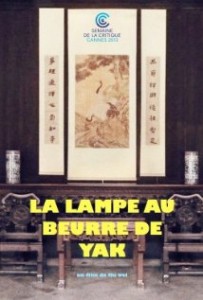 Nominated short Butter Lamp stands out despite its simplicity because of how it’s shot. It’s about a young photographer and his assistant taking pictures of Tibetan nomads in front of different backgrounds. It’s all about what they capture in the shot. Without a strong DP and Lighting engineer, this short would never get noticed.
Nominated short Butter Lamp stands out despite its simplicity because of how it’s shot. It’s about a young photographer and his assistant taking pictures of Tibetan nomads in front of different backgrounds. It’s all about what they capture in the shot. Without a strong DP and Lighting engineer, this short would never get noticed.
The best, basic advice to write successful film shorts…
Along with the ability to tell a great story concisely, a writer and director should always try to get their voice and style across. It’s not just what story you tell, it’s how you tell it. Have visuals and moments that show off voice, POV, style, technical awareness, knowledge of shot composition, depth, etc. Know what your trailer moment visuals would be even though you’re not making a trailer for your short (unless it gets nominated of course). Trailers for this year’s nominated short films can be found at http://shorts.tv/theoscarshorts/the-films/
Be prepared before you get on set. Know exactly what you need to get from every scene – what emotion, what action, what shots, what tone, performance, etc. And to keep your production at a low cost and on schedule, there are some things to keep in mind;
Write a project with only a few (great) locations; Write a project with only a few characters. I read a lot of shorts that have huge scenes that require dozens of extras. Cut scenes like these unless you have a ton of unemployed best friends; Keep the times of day in your scenes as consistent as you can. Try to write either all DAY scenes or all NIGHT scenes, etc. If you have to do day AND night shoots, that’s going to be extra time and breaks which will increase your budget. Try not to focus your scenes around a specific magic hour or sunset, as you will only get one chance and if something goes wrong (as it naturally will), you may lose a whole day of production; Don’t include too many visual effects, sound effects, animals, children, etc., unless you are an FX whiz or know how to do that yourself, or have an editor who does.
And finally – keep your short, short. No one wants to watch an 18 minute short. And festivals can’t program a 23 minute short. Your sweet spot should be 6-12 minutes, including credits.
The truth about shorts is that while they can be a great calling card, even Oscar winning shorts are no guarantee to future work. Most Oscar winners for short films have an easier time transitioning into directing or producing TV than feature length films. Don’t believe me? Look at what the last 8 years of winners have been up to after their win. An award-winning short will get you lots of meetings, but you better have your next TV pilot or feature script ready to go. Otherwise, you’ll just be short changing your own career.
Danny Manus is one of the most in-demand script consultants as CEO of No BullScript Consulting (www.nobullscript.net) and author of “No B.S. for Screenwriters: Advice from the Executive Perspective.” He was ranked one of the Top 15 “Cream of the Crop” script consultants in CS Magazine and named one of ScreenCraft’s “25 People Writers Should Follow on Twitter”. He was previously the Director of Development for Clifford Werber Productions (Cinderella Story, Sydney White), where he sold “To Oz” to United Artists. He was also Development Consultant for Eclectic Pictures (Lovelace) and the DOD at Sandstorm Films (The Covenant, 8MM2), which had a first look deal at Screen Gems. Danny is a columnist for ScriptMag, a judge four years running for the PAGE Awards, and has been a speaker at Austin Film Festival, Kansas City Film Fest, and well over a dozen other major writing conferences. You can follow him on Twitter @DannyManus.
**Join Danny Feb 26th at 1pm PST for his Writers Store Webinar, The Antagonist’s Journey. You’ll learn the keys to creating compelling, three-dimensional antagonist characters, gain greater understanding of the pathology and POV of strong antagonists, and discover a new structural beat sheet based around your Antagonist’s Journey to deepen your stories. For more info and to Register, please go to http://www.writersstore.com/the-antagonists-journey/


